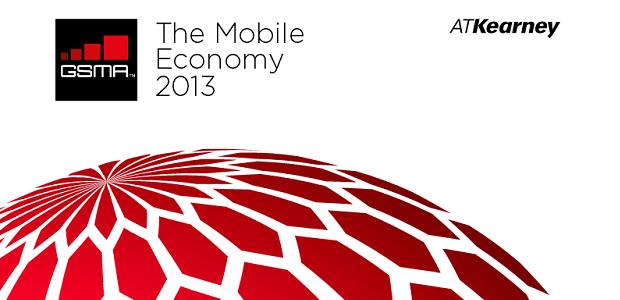2013 is expected to be a landmark year, with for the first time more SIMs active than people alive

The global mobile market has grown by 13.7% since 2008 with nearly 7 billion total connections and an additional 2 billion connections projected to be added by 2017. 3.2 billion people of the 7 billion on earth benefit from having a mobile phone. A further 700 million subscribers are expected by 2017, but this still leaves a huge potential for further growth.
In 2012, the global mobile market grew strongly to nearly 7 billion connections, representing a growth rate of 13.7% p.a. since 2008. The number of individual subscribers increased by 38% in the four years from the end of 2008 and the number of connections grew by 67% over the same period (an increasing number of people have multiple connections, e.g. for work and personal use or for phone and tablet).
As the global market continues to grow, 2013 is expected to be a landmark year, with for the first time more SIMs active than people alive, acording to a new mobile economy report released by GSMA. Despite challenging economic headwinds, the global mobile market is expected to continue to grow over the next five years, with annual growth in the number of connections of 7.6% expected between 2012 and 2017. This is slower than the growth rate of 13.7% over the period 2008 to 2012, which is to be expected given subscriber market saturation in some countries.
 In absolute terms, however, this still represents 3 billion new connections, 10% more than was added between 2008 and 2012. As a result of this growth, global SIM penetration is forecast to reach 129% by 2017 from the current 94%, breaking the 100% mark during 2013, while subscriber penetration should increase from 45% to 52% in the same period.
In absolute terms, however, this still represents 3 billion new connections, 10% more than was added between 2008 and 2012. As a result of this growth, global SIM penetration is forecast to reach 129% by 2017 from the current 94%, breaking the 100% mark during 2013, while subscriber penetration should increase from 45% to 52% in the same period.
In absolute terms Asia Pacific will add nearly half of all new connections between now and 2017, while 22% will be from Europe and North America combined.
Data continues to be a major area of growth for mobile operators with all regions showing impressive growth rates. In fact, total traffic volume in 2012 alone was higher than previous years combined and globally data is projected to grow by 66% p.a. through 2017.
Data growth is driven by the increased penetration of smartphones, in particular in emerging markets – and by increased data consumption per subscriber due to the faster download speeds and the uptake of data-hungry applications like video made possible by new technology such as 4G.
The GSMA new report, „The Mobile Economy 2013„, provides a comprehensive overview of the mobile industry and outlines the key opportunities and challenges for the mobile industry over the next five years. The study offers critical insights into the health of the mobile communications industry and details the global enablers needed to spur further investment and growth in the sector.
The GSMA represents the interests of mobile operators worldwide. Spanning more than 220 countries, the GSMA unites nearly 800 of the world’s mobile operators, as well as more than 230 companies in the broader mobile ecosystem, including handset makers, software companies, equipment providers, Internet companies, and media and entertainment organisations. The GSMA also produces industry-leading events such as the Mobile World Congress and Mobile Asia Expo.
Dariusz Mazurkiewicz – CEO at BLIK Polish Payment Standard
Banking 4.0 – „how was the experience for you”
„To be honest I think that Sinaia, your conference, is much better then Davos.”
Many more interesting quotes in the video below:









